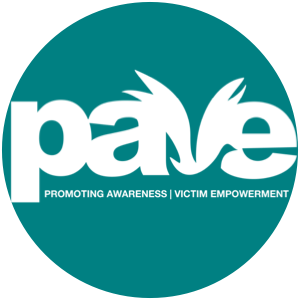SHATTERING
The Red Zone
The Red Zone
What is The Red Zone?
The Red Zone is the time of year, taking place from the beginning of the fall semester to the beginning of Thanksgiving Break, when the majority of college campus sexual assaults happen.
Why Does The Red Zone Happen?
Fall semester coincides with parties celebrating the return to campus and Greek Life rushing.
This is also when younger students are first exposed to their college campus culture. Students may be having their first experiences with parties, substances, and newfound independence. Many students enter college with limited education on sexual violence and consent.

Shatter The Red Zone Summit 2024
Let’s Talk Title IX: A Training With KnowYourIX
Learn all about Title IX and the new updates from our friends at KnowYourIX
Join PAVE/Survivors.org in #ShatteringTheRedZone
Learn About The Red Zone
Learn the basics about the different factors at play on-campus during The Red Zone.
College Organizing Toolkit
Ideas for ways students can join us in #ShatteringTheRedZone
Social Media Graphics & Posters
Utilize our social media graphics to help raise awareness and educate about issues pertaining to The Red Zone
Support PAVE/Survivors.org as we are #ShatteringTheRedZone
Donate to Support Survivors and Combat Sexual Violence
Shattering The Red Zone is an annual campaign by Promoting Awareness | Victim Empowerment (PAVE) dedicated to raising awareness and shattering the silence about college sexual violence, specifically by raising awareness on the period during the fall semester where sexual assault is most prevalent. By supporting PAVE/Survivors.org during The Red Zone, you help us get education and survivor support to students during and beyond The Red Zone.
Krispy Kreme Fundraiser
PAVE is giving you the best reason to indulge in a dozen (or two) Krispy Kreme doughnuts. Until November 17, 2024, 50% of your order will be donated back to Promoting Awareness | Victim Empowerment - PAVE when you purchase via our fundraising sales page!
See a movie to support survivors
For $30, get two tickets at any Regal Cinema location using fundraising sales page and 25% of your purchase will go back to Promoting Awareness | Victim Empowerment to help us support survivors.

Shatter The Red Zone Summit 2023
Thank you to our sponsor!
Jodi Suson of Suson Essentials, along with her power partners, offers decades of combined experience in customized wellness and leadership solutions. Jodi Suson discovered that she struggled being an effective leader until she was able to establish her health, which included modifying her lifestyle to support a healthy mind, body and spirit.
That life long journey inspired Jodi to develop a variety of programs that would transform lives. With a two-pronged approach, Suson Essentials supports both corporations and individuals.
THE FACTS
-
PAVE defines sexual assault as: any kind of non-consensual physical sexual act
-
PAVE defines sexual exploitation as: to use someone for one's own advantage in a sexual manner
-
PAVE defines sexual harassment as: Unwelcome sexual advances or gestures, requests for sexual favors, and other unwanted conduct of a sexual nature, especially in the workplace or other social settings.
-
PAVE defines sexual trauma as: trauma centered around sex, one's reproductive organs, or sexual assault
-
PAVE defines sexual violence as: an umbrella term for any kind of non-consensual sexual contact, behavior, or aggression
Overcome Common Rape Myths
Myth: False allegations are common.
Fact: An estimated 5% of reported sexual assaults are believed to be false. 90% of women are believed to not report their assault to police, putting the actual estimation of false allegations at closer to .5% (The Cut, 2018)
Myth: College men should be concerned about false allegations.
Fact: Research shows that more college men will experience sexual assault during college (6.8%) than there are suspected false allegations (.5%).
Myth: Only women are assaulted during The Red Zone.
Fact: Male college-aged students (18-24) are 78% more likely than non-students of the same age to be a survivor of rape or sexual assault (DOJ, 2014).
Myth: Sexual assault is not committed by people the survivor knows.
Fact: 85-90% of sexual assaults reported by college women are perpetrated by someone the survivor knows (DOJ, 2014)
Myth: Sexual assault is done through physical force or restraint.
Fact: 23.6% of women and 10.9% of men have experienced sexual coercion. (Basile et al. 2022)
PAVE defines sexual coercion as: The act of using pressure, threats, alcohol or drugs, or force to engage in sexual activity with someone.
The study referenced uses a narrow definition of sexual coercion only covering penetrative sex. PAVE believes any sexual activity, penetrative or not, can be coercive. Therefore, the true number of people who have been coerced is likely higher than research reports.
Myth: I have never seen the alleged perpetrator behave in an inappropriate way, therefore, the allegation must be false
Fact: Just because someone is kind to us does not mean they treat everyone the same way. People show different sides of themselves to different people. Anyone is capable of perpetrating abuse.








